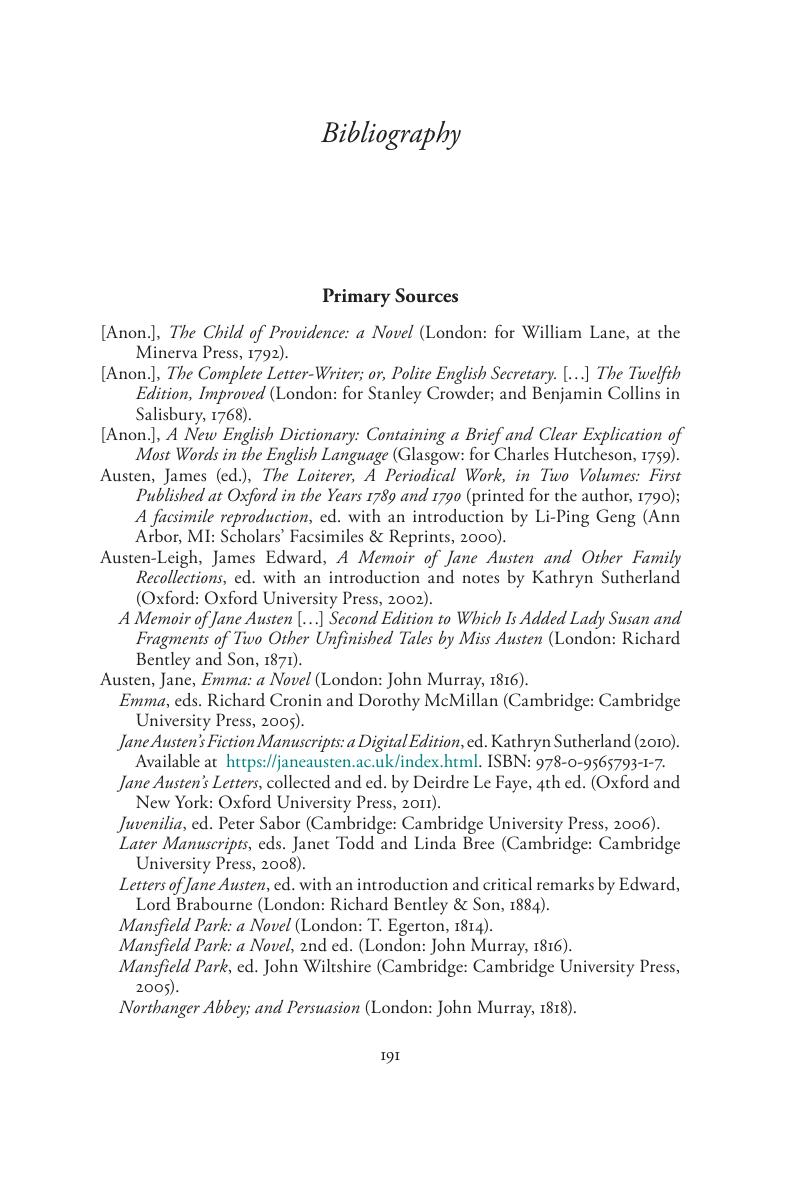Bibliography
Published online by Cambridge University Press: 18 February 2020
Summary

- Type
- Chapter
- Information
- Jane Austen's StyleNarrative Economy and the Novel's Growth, pp. 191 - 205Publisher: Cambridge University PressPrint publication year: 2020

